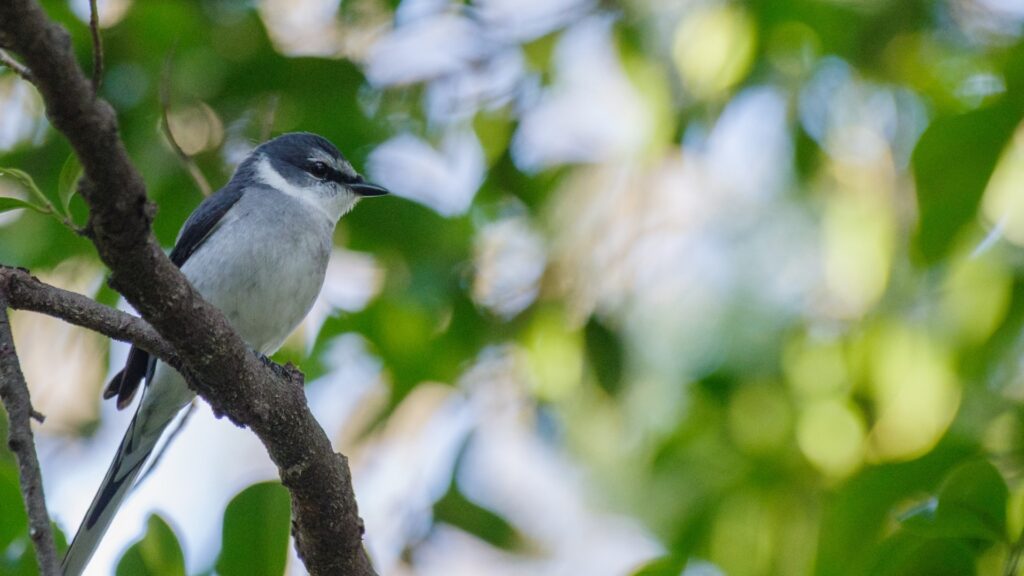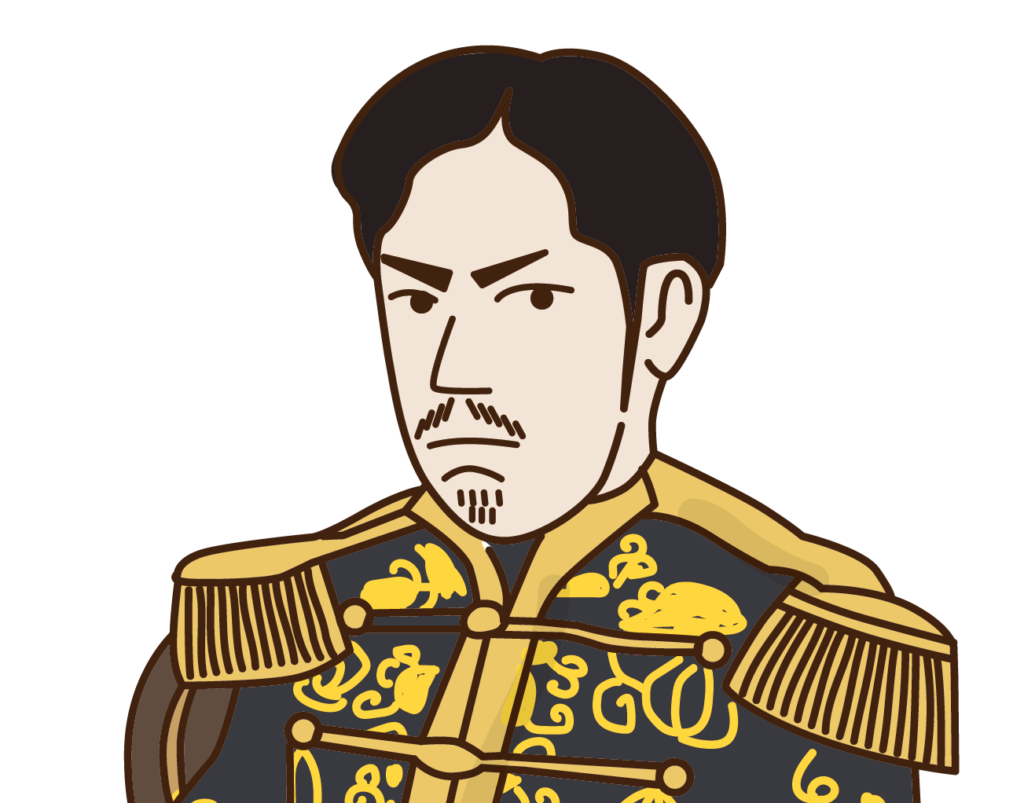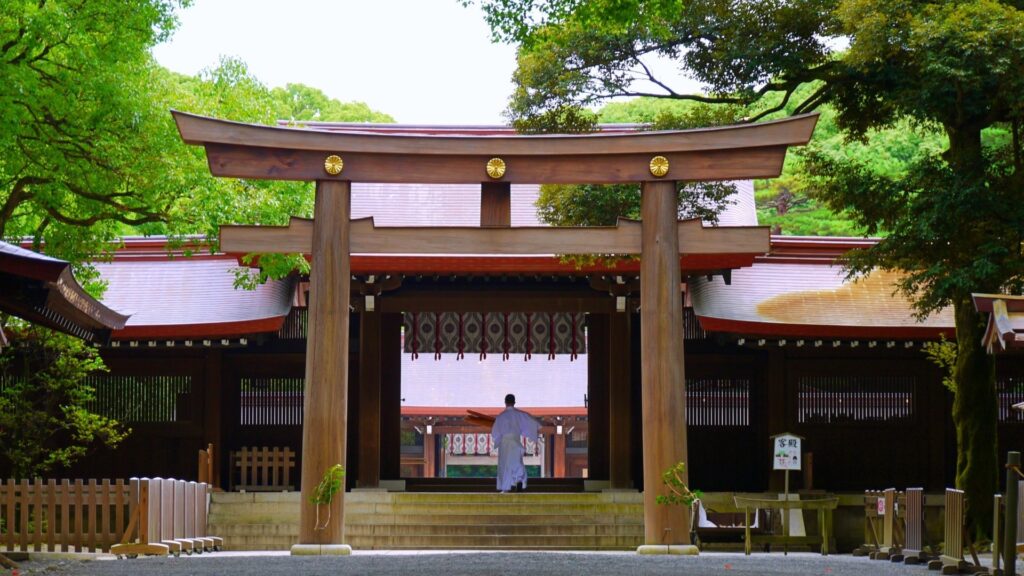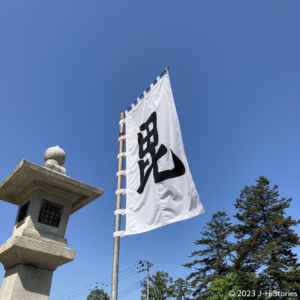Meiji Jingu Shrine: An Amazing Green Forest to Commemorate the Virtues of Emperor Meiji
Meiji Jingu Shrine is located in the center of Tokyo to enshrine the spirit of Emperor Meiji and Empress Shoken. It has a variety of wild animals, bugs, butterflies, fungi, 234 kinds of trees, 352 kinds of plants, and more than 100 kinds of birds in the forest which is blessed with a breath of fresh air and fertile land. Several rare creatures also live there such as Zatomushi (Opiliones), Japanese raccoon, Japanese ratsnake, Japanese gecko, Erythronium Japonicum, and Mandarin Duck.

Miraculous Green Sanctuary: Over 110,000 Volunteers Created Meiji Shrine
The forest of this shrine is a miraculous green sanctuary crafted by more than 110,000 volunteer laborers. More than 100,000 trees were planted on what had formerly been a wasteland. Its construction started in 1912, about one year after Emperor Meiji (1852~1912, 明治天皇) passed away to commemorate his virtues. The Shrine was completed in 1920 in answer to many people’s desires. The design predicted that the forest area would expand greatly; an extension of broad-leaved trees within 50 years, a decrease in the size of needle-leaved trees within 100 years, and a subsequent expanse of evergreen broadleaf forest within 150 years, which is the key phase that brings about the natural-cycle of nature itself and life’s diversity.
The Transformation of Japan: Emperor Meiji's Ascension and the End of the Samurai Period

Emperor Meiji was born in 1852 at the end of the Edo Period (1603~1868), just one year before a Commodore in the US Navy, Perry, came to Japan with the sovereign’s message from the US president seeking to open the country up. This triggered several opposing opinions which were (a) open country wing or antiforeignism, (b) overthrow Tokugawa Shogunate or maintain the regime, and (c) Kobugattai (reconciliation between the imperial court and the Shogunate) or Independence. These arguments escalated to armed conflict and erupted into a tumultuous period. Emperor Meiji’s father, the 121st Emperor Komei (1831~1867,孝明天皇) who harbored a strong anti-foreign sentiment died from illness suddenly at the age of 35 in December of 1866. Emperor Meiji subsequently ascended to the throne in January 1867 at the age of 16. The restoration of imperial power in the following year ended Tokugawa Shogunate and started the direct Imperial rule.
Active Accomplishments of Emperor Meiji
Emperor Meiji became a different type of Emperor from the previous Emperors who had great regard for the practice of the Imperial Court. He visited many places rather than staying in the Imperial Palace. There are several notable episodes of his rule.
- He positively met several foreigners; a minister to France, Leon Roches, a prince of Empress Victoria Alfred Ernest Albert, King of Hawaii Kalākaua, and more.
- He enjoyed his first trip to Edo castle (Imperial Palace in Tokyo) seeing the grand spectacle of Mt. Fuji, and enjoying looking at people's lives such as rice planting, fishing, etc.
- He prayed for the Imperial ancestor, Amaterasu Omikami, enshrined at Ise Jingu Shrine, which successive emperors had never visited.
- He stayed in Hiroshima where the Navy was based to command the war during the Japanese-Sino War in 1894. His temporary accommodation was simple: one table, chair, and bed. He spurned having a heating appliance or a sofa because he did not feel any inconvenience when thinking of a soldier’s own hash situation.
- His imperial rescripts after two victories in the Japanese-Sino and Japanese-Russo Wars were respectful of Sino and Russia. "Don’t be arrogant, don’t lose our creditability by insulting friendly them."
Establishment of a modern nation-state

In the pioneer days of establishing a modern nation-state after the termination of the Samurai period and opening the country to the wider world, their whole lives were devoted to it. Several sites were designated to Japan's Meiji Industrial Revolution such as Glover House, Mitsubishi NO.3 Dry Dock, and more. Emperor Meiji was a revered leader who led Japan through a period of rapid modernization. Therefore, people wanted to commemorate his virtues by building the Meiji Jingu Shrine. Please enjoy walking through the green oasis thinking of Emperor Meiji and the Meiji Era’s elevated mood toward a new era. People felt a bright future ahead of them. In addition, you feel the Meiji Era's mood at the Museum of Meiji Mura.
Emepror Meiji Timeline
| 1852 | Emperor Meiji was born | Age =1 | Edo Period |
| 1853 | Commodore Perry of the US entered port at Uraga at the entrance to Edo Bay | 2 | |
| 1854/3 | The Treaty of Peace and Amity between the US and Japan was concluded | 3 | |
| 1864/03 | Yoshinobu was appointed to the post to protect Kyoto Imperial Palace | 13 | |
| 1864/08 | Kinmon incident, Yoshinobu fought and protected the Kyoto Palace | 13 | |
| 1867/1 | Tokugawa Yoshinobu was appointed the 15th Shogun | 16 | |
| 1867/01 | Emperor Komei passed away | 16 | |
| 1867 | Emperor Meiji was ascended to the throne | 16 | |
| 1867/11/10 | Taisei Hokan, Tokugawa's political power was officially returned to Emperor Meiji | 16 | |
| 1867/12/5 | The Decree for the Restoration of Imperial Rule | 16 | |
| 1868/1/3 | The Boshin War started at Toba-Fushimi | 17 | |
| 1868/4/11 | Edo castle surrendered without bloodshed to Imperial Army | 17 | |
| 1868/8/27 | Eenthronement of the Emperor Meiji | 17 | |
| 1868/9/8 | The first year of Meiji Era | 17 | |
| 1868/9 | Aizu War ended | 18 | |
| 1868/10/13 | Edo Castle was made to be the imperial palace | 18 | |
| 1868/10/23 | The Meiji Restoration | 18 | Meiji Period |
| 1869/5/18 | Boshin War ended at Hakodate | 19 | |
| 1877 | Seinan War | 26 | |
| 1889/5/16 | The Constitution of Imperial Japan was promulgated | 38 | |
| 1894-1895 | Japanese-Sino War | 43 | |
| 1898 | Yoshinobu met Emepror Meiji | 47 | |
| 1901 | Emperor Showa was born | - | |
| 1904-1905 | Japanese-Russo War | 53 | |
| 1911 | Completed revision of unequal treaties with Western countries | 60 | |
| 1913 | Emperor Meiji passed away | 61 |
Recommendations to visit
Meiji Jingu Shrine
- Access: A 5 minutes walk from JR Yamanote Line Harajuku Station
The Museum of Meiji Mura
- Access: Take the Meiji Mura bus at Meitetsu Bus Center of Nagoya Station and take the Meiji Mura bus


